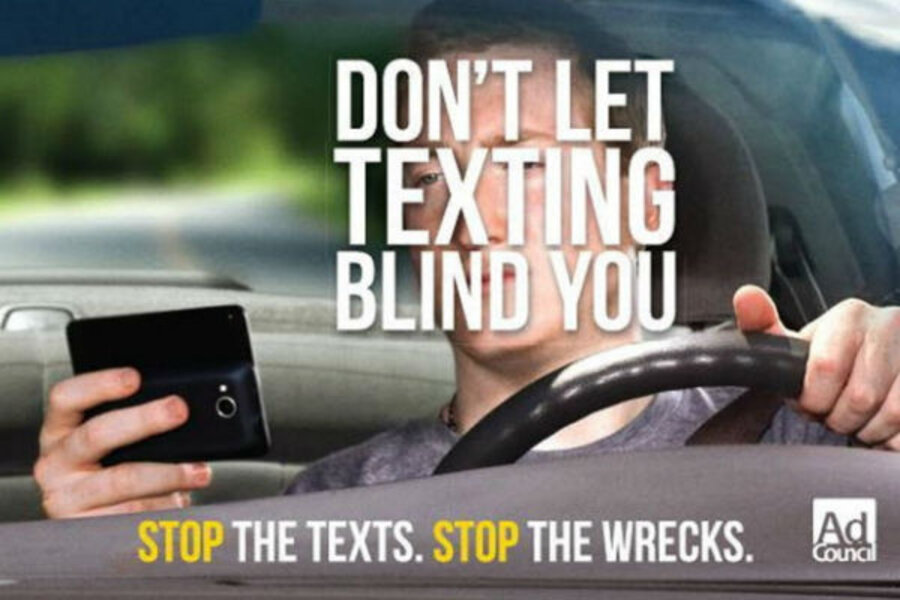Peer pressure is part of texting and driving – teens can’t say no
Loading...
Clearly, there is no love in texting while driving!
Contrary to what I’ve heard from teens who admit to texting while driving a car in motion, it is not impolite or mean not to answer a friend’s text while driving a car! It’s just plain intelligent. And if a friend, relative, or anyone else who calls or texts you when they think you might be driving, they are not loving you. They are endangering you.
Here’s why: One new study, by the National Highway Traffic Safety Administration (NHTSA), found that distracted driving is the No. 1 cause of teen deaths and another one, by the AAA Foundation for Traffic Safety, found that using digital devices is the No. 1 cause of distracted driving. Put those two findings together, and there is truly no excuse for – and not one ounce of love or wisdom in – either texting while driving a car or encouraging someone to do so by texting them when they’re driving.
The AAA study found that “talking on the phone [hands-free too] or texting while driving was the most common behavior that distracted young drivers, more so than adjusting controls, grooming, eating or drinking, or engaging in horseplay or loud conversations with passengers.”
Entitled “Distracted Driving Among Newly Licensed Teen Drivers,” the study was conducted by researchers at the University of North Carolina and was the first “to use in-car video recordings to study teen distracted driving,” CBS News reported. The video clips were recorded “inside the cars of 50 families.” Recording was “triggered by certain events – sudden braking, an abrupt turn – during unsupervised driving” by both new drivers and “older, more experienced sibling drivers … resulting in 24,085 driving clips of 52 teens taken over a six-month period,” CBS News reported.
The NHTSA says “the average text takes our eyes off the road for five seconds – at 55 MPH, enough time to travel the length of a football field – so it isn’t surprising that a texting driver is 23 times more likely to get into a crash than a non-texting driver,” even though 75 percent of young adult drivers are confident they can safely text while driving. The NHTSA study found that 32 percent of young adults who drive while distracted “don’t think anything bad will happen,” 22 percent say “it makes driving less boring,” and 34 percent say they’re used to multitasking.
So we ConnectSafely.org folk asked some teens here in California why they think people are so casual about texting while driving, and we heard a range of responses like (I’m paraphrasing)….
“Technology is my life – why should I put my life on hold just because I’m driving a car?”
“It’s rude not to answer a text” – suggesting that it’s not socially acceptable to “ignore” someone, and driving doesn’t change that. It’s scary to think it may already be a “social norm” to respond to a text while driving.
“Texting is who I am. It’s even more than self-expression and definitely more than just communication. Why would I take time out from that?”
When asked about how this is different from drinking and driving, or DUI (to which our society has managed to attach a stigma or at least awareness), teens told us that alcohol abuse is risky anytime, anywhere, while texting isn’t. So the two behaviors are entirely different, they told us.
Those comments illustrated for me the challenge we have ahead of us as a society, in changing a highly risky behavior in which some young people (and probably some adults too) seem even to take pride.
We were very successful in raising awareness about driving under the influence of alcohol and creating the norm of having a “designated driver.”
But this is different. It isn’t just a sequel to that public campaign. So we need to be creative and, above all, create a campaign around facts, not fear.
What will help? Getting everybody to understand there’s no love in texting while driving? Yes? No? What else? Please comment with ideas or stories about what has helped in your families and social circles!








